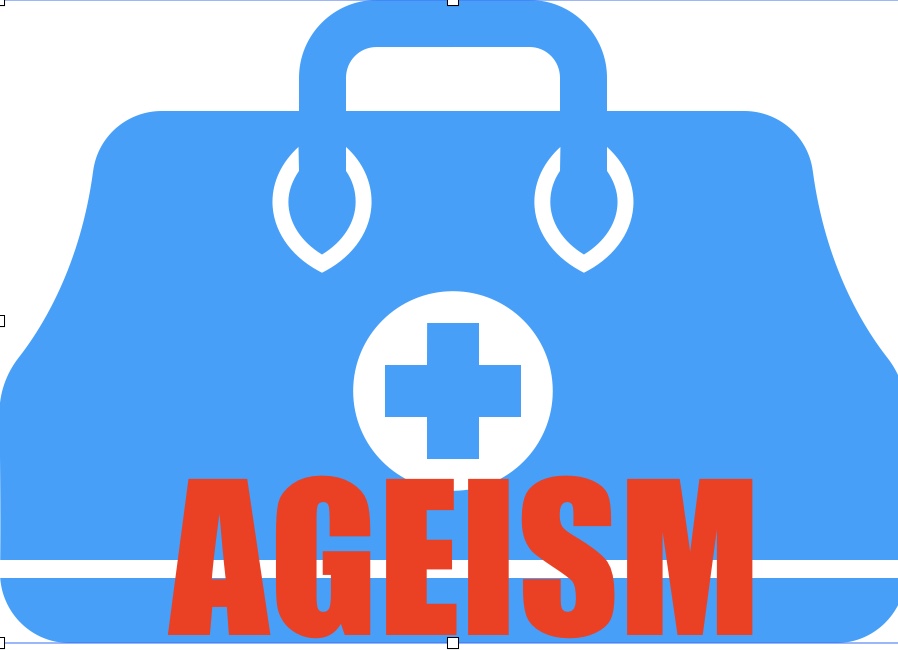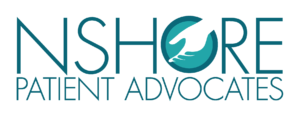Ageism In The Health Care Setting

As Patient Advocates, we advocate for all people with any kind of a medical need. Many of our clients have complex medical conditions, but not all do. We have clients of all ages, but a large number of our clients are the elderly; these are either Senior Orphans (who have no family or their family lives far away) or their family members don’t have the required time for their care needs (due to time constraints because of their own work and family demands). Whatever the family support, many of our clients find us, because of the overwhelm of complex medical matters, and/or after they have been dismissed or ineffectively/poorly treated in the modern health care setting. So they desperately look for support … and find us. And we listen!
We listen with open ears and hearts, and we hear a lot. One issue that we hear over and over again, loud and clear, and unmistakably is that age matters! Our elder clients feel discounted and dismissed as “old” by the modern health care system! This is a real phenomena. And it has a name – Ageism.
What is Ageism?
Definition
- Prejudice or discrimination against people based on their age. This may be casual or systematic.
- The term was first used in 1969 by Robert Neil Butler to describe discrimination against older adults, and it was patterned on sexism and racism.
Ageism is more widespread than we are aware of, but unlike racism or sexism, it has not been widely and/or publicly discussed and countered. Actually, it is almost normalized and accepted thru stereotypes. Not just in the USA, but globally. The World Health Organization says, for older people, ageism is an everyday challenge. Overlooked for employment, restricted from social services and stereotyped in the media, ageism marginalizes and excludes older people in their communities. And this has negative impacts on their health and well-being. (https://www.who.int/ageing/ageism/en/)
But now, with a large number of adults over 60+ years being negatively impacted by ageism and the ramifications being more widespread and publicly noticeable (e.g. increasing and massive costs for social services, increased cost of Medicare and Medicaid, lack of suitable senior housing), our society is starting to recognize the negative results of ageism not just in the elderly population, but in the general population (where caring for an growing elder population is starting to show economic, medical, and emotionally tolls on the family care takers). Considering that the older population is outgrowing the younger population in the near future, this issue is finally finding concerted interest and research amongst the different actors involved (individuals, medical providers, legislators, and more).
For the purpose of this blog post, and dedicated to our elderly clients, who have provided us with valuable first hand insights, and who are vulnerable to this discrimination, we will focus on ageism in the health care setting, with the purpose of raising awareness of this issue.
Stereotypes
Here are just a few common stereotypes that have been accepted as truths about the elderly, and which oftentimes subconsciously impact the way the elderly see themselves and how medical providers see and treat their elderly patients in today’s health care system :
- Aging is depressing
- Aging makes you forgetful
- Aging gives you dementia
- Aging prevents you from learning new things
- Aging makes you slower
- Aging makes your body hurt all the time
- Aging leads to loneliness
- Aging makes you unproductive
- Aging makes you needy
All of these stereotypes might seem innocuous enough to you. After all, these are just part of aging, right? But are they?
The System
It is not news that older people, on average, decline in some of their physical and mental functions, get sick more often, have more medical conditions, take more medications, and are more likely to end up in the hospital. We see this regularly amongst our clients.
And while it is normal that as we age our health becomes more complex with a general trend towards declining capacity, this does not mean that all elderly people experience aging in the same way and that there is a universal approach to their care. Far from it!
We see 90 year old seniors, who are still actively engaged in life, participating in book clubs, gardening, cooking, walking every day, etc. Well, we read about centennials participating in “races” in the news! And we see 70 year olds, who can barely walk anymore, live with Parkinson, Dementia, Alzheimers, the list goes on. Too many combinations exists to list them all. You get the idea. So it should be clear, that there is no such one thing as “the” elderly patient. The elderly don’t reach expected “milestones” like our children do when they grow up, by which we can measure their development. They are individual persons with very individual circumstances and individual experiences. And as such, their care demands a personalized approach.
For acute care, a more standardized immediate care model may work. And our health care system is good at that. But for the management of the often long-term conditions that our elderly patients are faced with, the current system is not well equipped.
The current system is largely symptom-centered, meaning that depending on the symptom, the patient is given a “simple” diagnosis that complies with a standard protocol of treatment, many times either a prescription medication to manage the symptom, and/or the patient is being send to a specialist for further care; and also there this approach of a standard protocol of symptom management may be applied.
Doctor – Elderly Patient relationship
Our own clients have lamented to us, how they have gone to the doctor for knee pain, and after an exam in which the doctor found nothing of concern, they were dismissed with the idea, that their knee is just old. They were prescribed pain medication to help with the pain, and told that’s all that can be done. After several more appointments for the same concern, with the dosage of pain medication being increased, and physical therapy added, but still in pain, the patient came to us. We listened to our client concerns, we took her medical history, we looked at her current living circumstance, what physical demands and challenges may have impacted her knee, and we trusted her self-assessment of experiencing real pain and that something is wrong with her knee. We advocated for more diagnostic tests. It turned out the knee wasn’t “just old”, there actually had been a hairline fracture, that now was healing, but improperly. The client ended up with knee surgery, and is doing very well today. The ageism at play here is clear: dismissing an elderly patient’s concern as a normal part of aging. Instead, the fact, that only one knee hurt, should have raised curiosity and concern, considering both knees are the same age. In a younger person, this would have raised a flag and would have been investigated more thoroughly.
Or our client, whose husband found her seriously confused and hallucinating after she had been taking a couple of antibiotics for a respiratory infection. This experience was at first dismissed as increased symptoms of her Parkinson and/or Dementia, although in her daily life, she only shows minor symptoms of these. Once she stopped taking the antibiotics, though, her hallucinations disappeared and her confusion has become rare and mild again. But our client felt awful about herself: misunderstood, embarrassed, old and failing. At her most vulnerable, she was doubly “injured” by ageism: dismissed as old, diagnosed as Parkinson and Dementia. While in this situation the doctor could not have done much medically, other than potentially discontinue or switch the medication, she could have looked at her patient more holistically, not just as a diagnosis of Parkinson and Dementia. And the doctor could have emotionally supported her patient through this experience, identifying this as a side effect to a medication, rather than an expression of our client’s old age.
In both of the above examples, a more person-centered vs the symptom-centered approach would have provided a more successful outcome.
Fragmented Care
Considering the multiple health conditions of the average elderly, it is easy to see how an elderly patient quickly ends up with many different care providers. Unfortunately, due to time constraints and the fact, that providers do not share the same locations or even networks, these various providers more often than not lack coordination of and communication about their joint patients’ care. This creates a fragmented care setting, in which a lot of critical information can get missed, which in turn can hinder the patient’s health improvements or even cause harm; such as when a medication is prescribed that may be contraindicative with another already prescribed medication or with a health diagnosis from a different provider.
Sure, one could argue, that the patient is responsible for communicating their own information, and that it true. But this is difficult to do, when you have to coordinate the information from your various providers, and you may not even have been given this information in print form, but rely solely on your own notes and/or memory. To add to that challenge, all too often the provider talks in medical terms that we are not familiar with, and there is rarely time to repeat and thoroughly explain what all this means, as the medical providers are rushed to finish the appointment to get to their next appointment.
It is thus easy to see, how this model is a form of ageism, as it clearly neglects to identify and address the reality of that category of elderly patients, with their particular complex health circumstances and needs. It is a very frustrating, and possibly dangerous, experience for an elderly person to try an manage themselves in this set up. And yes, it can be frustrating for the medical provider, too.
Final Words
Ageism is real. But with awareness of its existence and its forms and shapes, it can be countered. It won’t happen over night, but it needs to happen, and awareness for this needed change is already happing – we are happy to say, we have seen this awareness in some of our clients’ medical providers. They are out there!
Also, we don’t need to wait for the system to change. After all, the system is made up of various actors, of who we are part of. We have tools, too, that we can use to raise awareness and advocate for our selves. One is, not to buy into the stereotypes of ageism ourselves. Another is, to remember, that medical providers have been trained to focus on diagnosing and treating disease, so we, the patients or their advocates (family members or professional) need to be clear on the needs of the elder person’s goals to maintain their quality of life, and communicate these to our providers in order to receive personalized care. We are all on the same team!
Sources. Further reading.
Our dear clients
https://www.who.int/ageing/ageism/en/
https://www.nia.nih.gov/health/healthcare-perceptions-about-older-patients




